|
At the beginning of the war, Guy’s chief
engineer went to Mersa Matruh in North Africa to see the Guy
armoured vehicles in operation in the North Africa Campaign. The
vehicles performed well and gave good service.
Many Guy military vehicles travelled to
Dover, at the beginning of the war. They were taken to France
for use by the British troops. When the country was invaded by
the Germans, and the allied troops were evacuated in May 1940,
the vehicles, like many others, were driven over the cliffs to prevent
them falling into the hands of the enemy.
Shortly after the start of the war,
production of the ‘Ant’ and ‘Quad Ant’ range moved to Karrier.
Guy did however, produce some armoured bodies. 21 Guy ‘Lizard’
armoured command vehicles were produced in the factory, as were
several 4x4 universal gun carriers. The factory also produced
anti-aircraft, and other guns thanks to the company’s reputation
for high quality, precision work.

Part of the gun shop.
Production of searchlight generator
vehicles soon ended due to the development of radar. Some
civilian vehicle production did take place at Park Lane due to a
shortage of vans and lorries for essential services and
supplies. Each vehicle required a government permit in order for
it to be built. |
|
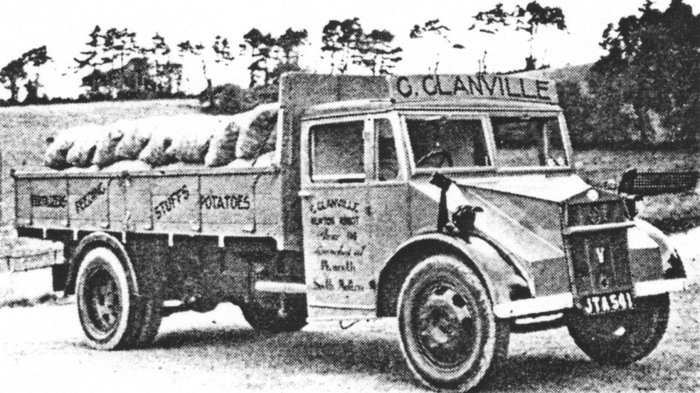
The 'Vix-Ant' introduced for civilian
operators in 1941. Courtesy of Brendan Kinsella. |
|
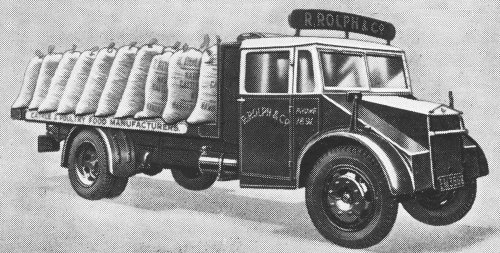
A medium wheelbase Guy 'Vix-Ant' lorry. |
The vehicles consisted of special versions of the ‘Vix-Ant’,
powered by a Meadows 3.7 litre, 4-cylinder petrol engine, with a
4 speed gearbox.
The vehicles were built with both long, medium, and short
wheelbases. |
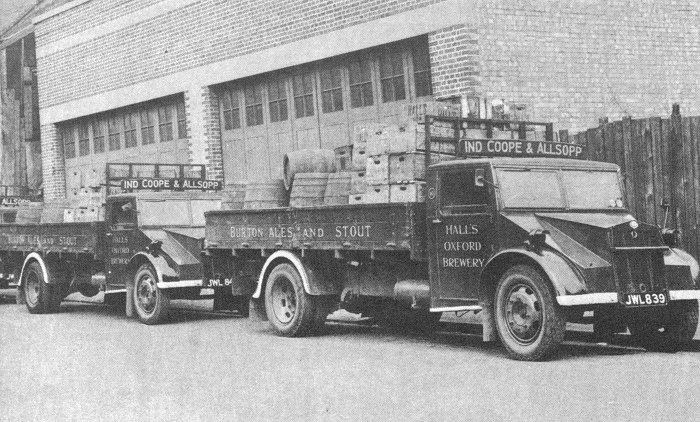
Two 'Vix-Ant' lorries that were used to deliver
beer and stout.
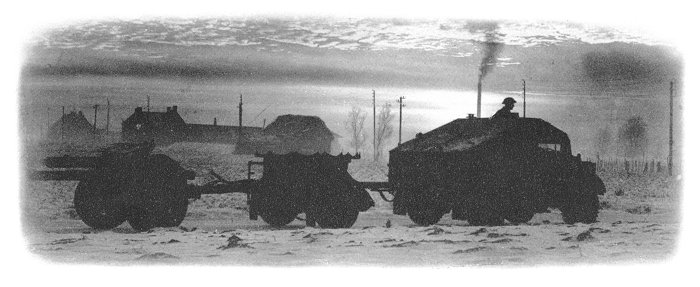
A 'Quad-Ant' tractor in France.

One of six experimental 4-wheel drive WD vehicles
built at the beginning of W.W.2.
|
Around the same time as production of
searchlight generators ended, Guy received an order from the
Ministry of Transport for the production of a chassis suitable
for a use with a double decker bus body. At the time there was a
severe shortage of buses, many of which had been lost in the
blitz. The specification had been completed on 5th September,
1941, and the prototype was ready on 31st March, 1942.
The new vehicle, called the ‘Arab’ utility
double decker bus was based on the original ‘Arab’ bus chassis
from 1933. Due to the shortage of materials, the aluminium parts
were made of cast iron, which increased the chassis weight by
20%. Great attention was paid to increasing the life of
components, and the time between vehicle overhauls. The new bus
gained favour with many operators because of its reliability and
low running costs. Over 2,700 were built during the war. The
orders not only kept Guy going during the war, but also
established the company as one of the leading suppliers of bus
chassis, which led to the continuation of orders for many years
to come. |
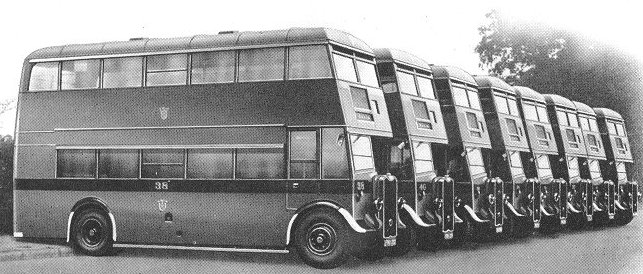
A fleet of 'Arab' utility buses.
| During the war the factory worked long hours to keep up with
the demand for vehicles and components. Employees worked from 8
a.m. until 8 p.m. on weekdays, 8 a.m. until 4.30 p.m. on
Saturdays, and 8 a.m. until 12.30 p.m. on Sundays.
There was a severe shortage of labour, which was solved by
the company in a manner that made history, and changed the law.
At the time, part-time workers were not eligible for national
insurance, and so would not look for work through the labour
exchange. |

The late Judge Caporn and schoolboy
volunteers at work in the body shop.
|
As a result Sydney Guy instigated a scheme
which resulted in him being threatened with imprisonment and fines.
Fortunately the Ministry of Employment quickly realised that such a
scheme was a necessity, and so similar schemes were set up
throughout the country.
Guy gave senior pupils and teachers from
local schools, the opportunity of doing voluntary war work
during their holidays. They were employed on the assembly jigs
for the bodies of army trucks.
Over 1,000 people answered the initial
advertisement. The response was so great that a separate
department was set up to organise the scheme.
When the pupils and teachers were at
school, part-time women workers took their place during the day,
with business and professional men, doing a night shift.
One of the first, and most enthusiastic
volunteers was Judge Caporn, a County Court Judge. |
 |
| Guy Motors participated in the National Savings Scheme, and
Sydney Guy gave six pence on each certificate purchased. The
company also produced its own I.D. card with photo and finger
prints on the back. |
|
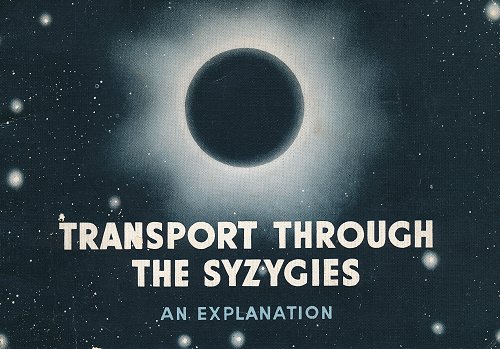
A booklet produced as an advert, and an
explanation of the 'Syzygies' name. |
During the war the scope of advertising was greatly
restricted, and so Guy started a clever campaign in order to
keep the company’s name alive. The campaign was influenced by
the widespread interest in crosswords, and the ‘Brains Trust’ on
the radio, which provided relief from the problems of war.
It consisted of a series of clever adverts entitled
‘Transport through the Syzygies’ which gained a lot of interest.
People at first thought ‘syzygies’ was a spelling mistake, until
it appeared time, after time. |
|
Guy received many letters from people
expressing their ideas about the word, which was in fact used in
its astronomical sense, meaning a computation of time. |
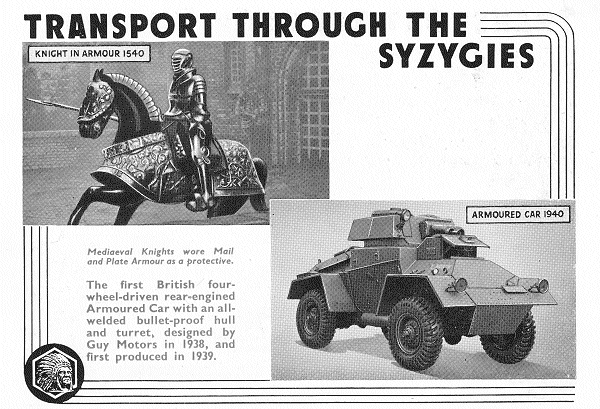
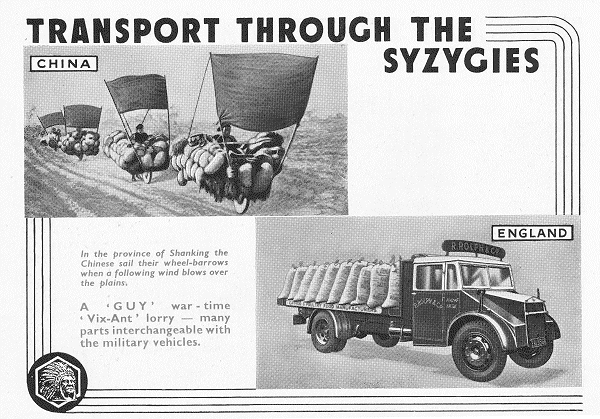
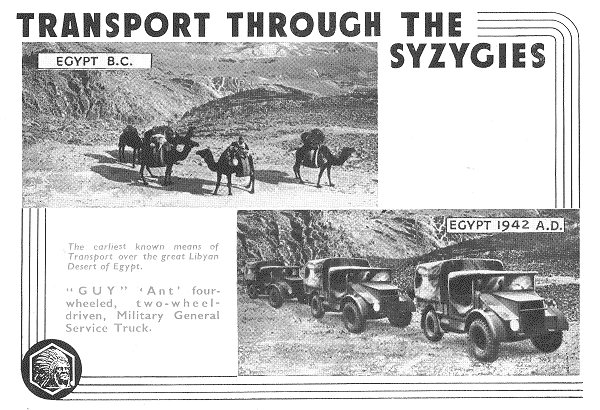
| The following is an article from the Express & Star,
Wednesday 3rd January, 1945: |
|
This is Their
War Effort – VI
Wolverhampton Firm Pioneers in
Welding Armour Plate and Use of Part-Time
Workers
With the production of many
thousands of military vehicles of several
successful types, and over 2,000 war-time bus
chassis to their credit, Guy Motors Limited,
Wolverhampton, have, in the opinion of their
chairman and managing director, Mr. Sydney S.
Guy made two important contributions to the
nation’s war effort, in addition to their main
production activity.
The first was concerned
with the welding of bullet-proof armour plate
for armoured cars and tanks; the other with the
introduction of part-time workers into industry.
For over 20 years the
company has paid much attention to vehicles for
military purposes and has produced many types.
When expenditure on the army reached very low
levels, and military were ordered in such small
quantities that they could not be produced
profitably, Guy Motors designed and developed
military types largely at their own expense, and
during the 14 years up to 1937 produced 14
different types.
Supply
Maintained
Very shortly after the war
started, Guy vehicles or proved quality were
available for military duty in large numbers,
and the supply has been steadily maintained ever
since.
One of the most successful
types has been the Quad Ant, a four-wheel drive
vehicle developed from an earlier model. It has
been adapted for a number of uses, notably as an
artillery tractor. It was on a variety of this
type, with the engine at the rear, that the
first British armoured car body of all welded,
bullet-proof, armour-plated construction was
mounted.
Convincing others that
welding was better than riveting for this
purpose was not easy, but now the system is
widely applied, not only to armoured car bodies,
but also to tanks. As early as 1940 details of
the method were sent to America, and though
there may be no connection, it was reported not
long after that the first American tanks with
welded hulls were coming off the line. Guy
Motors have produced a considerable number of
armoured cars of their own design, and have
recently been producing hulls for the Humber
armoured car.
Mr. Guy is equally proud of
the part the firm played introducing the
extensive use of part-time labour into war
factories. It was found that many professional
and business men were not only able, but anxious
to devote their evenings to factory work, and
that many women were prepared to work part-time
during the day. Special arrangement of working
hours was made for them, and in a very short
time the firm had more applicants than they
could place.
It seemed, however, that
the law did not provide for the employment of
part-time workers, and the Ministry of Labour
pointed out that Mr. Guy was in danger of very
severe penalties, both fines and imprisonment. A
stand was made, but at one time it seemed that
the part-time work would have to be abandoned.
The law was changed soon afterwards and
subsequently part-time work for some categories
became compulsory.
The achievement of
part-time workers in the factory has been
considerable, and many of the women who started
in this way have switched over to full-time
employment. They, and other women have proved
outstandingly successful at a wide variety of
jobs in the factory.
Buses for
War Workers
In 1942 It was found that
buses would have to be produced to enable
transport organisations to cope with the huge
task of carrying workers to their work, and as
sufficient military lorries of a type Guy Motors
were producing had been made, they were switched
over to making bus chassis.
Although of Guy design, the
wartime chassis had to conform to Ministry of
War Transport specifications and the materials
used were not always exactly what the company
would have wished, resulting in the chassis
being heavier than its pre-war equivalent. Over
2,000 war-time chassis have been produced in
about two and a half years.
In addition to their
production effort, Guy Motors have reconditioned
large numbers of engines and have continued to
supply spare parts which kept vehicles in
service. The stores department has recently
supplied from stock, spares for vehicles 22 years
old. |
|

A wartime photo on a winter's day beside
the Guy factory, courtesy of Tom Thorne. The photograph was
given to him by the daughter of
John Lyndon Owen,
who worked at Guy Motors during WW2. John Lyndon Owen, was born
on the 15th January, 1897 in Neath. He was a dispatch rider
during the battle of the Somme and served with the 71st and 83rd
Motor Transport, Army Service Corps. During WW2 he served in the
ARP, firstly in Wolverhampton and then in Finsbury. He worked at
Guy’s Motors, Fallings Park, Wolverhampton.
His service record states that he enlisted
on the 8th August, 1914 and embarked on the 21st September,
1914, disembarking on the 25th September, 1914. He was part of
2nd Indian Cavalry Division and on the 1st March, 1915 was
appointed L/Cpl. On the 1st May 1915 he went into hospital
suffering from varicose veins and was discharged from hospital
two days later. On the 16th October, 1915 he was detached to SSO
2nd ICD and on the 11th February, 1916 was posted to the 2nd
Indian Cavalry Div HQ’s. On the 2nd? June 1916 he was
posted to S’c’bad Brigade Headquarters and on the 20th July,
1916 was posted to the 5th CDSC. On the 20th April, 1918 it was
designated the 74 Divisional MT Company. Thanks to Tom Thorne
for the details. |
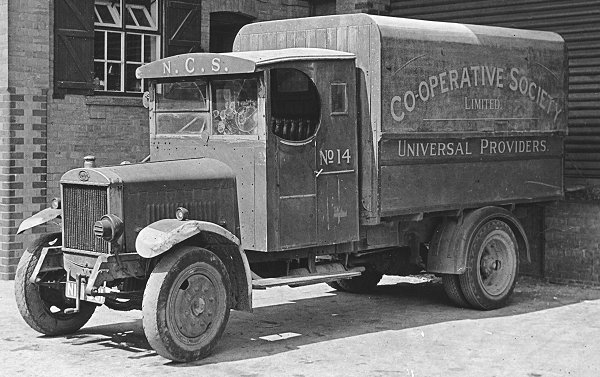
A 30 cwt. van built in 1921. Photographed during World
War Two.
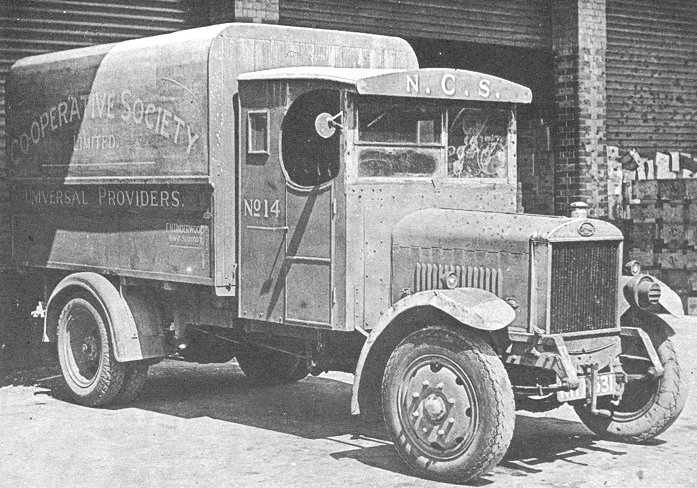
Another view of the 30 cwt. van from 1921.
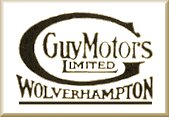 |
|
 |
|
 |
Return to
Into the 1930s |
|
Return
to the
beginning |
|
Proceed to
The Post War Years |
|